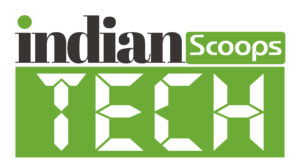Technology plays a crucial role in supporting speech-impaired children, offering various tools and resources to enhance communication, learning, and social interaction. Here are some key areas where technology is making a significant impact:
1. Augmentative and Alternative Communication (AAC) Devices
AAC devices help children with speech impairments to communicate effectively. These devices range from simple picture boards to sophisticated speech-generating devices. Examples include:
- Speech-Generating Devices (SGDs): These devices produce spoken words when the user selects symbols or types text. They can be standalone devices or apps on tablets and smartphones.
- Picture Exchange Communication Systems (PECS): This system allows children to communicate using pictures. They select images to convey their needs and thoughts, which can be used with or without electronic devices.
2. Voice Recognition and Speech-to-Text Technologies
Voice recognition and speech-to-text technologies can be particularly useful for children with partial speech abilities. These technologies convert spoken words into written text, helping children participate in classroom activities, complete assignments, and communicate with peers and teachers.
3. Assistive Listening Devices (ALDs)
ALDs amplify sound for children with hearing impairments that affect their speech. These devices include hearing aids, FM systems, and sound field systems, which can be used in classrooms to improve listening conditions.
4. Interactive Whiteboards and Tablets
Interactive whiteboards and tablets can be used in educational settings to support speech-impaired children. Teachers can use these tools to create interactive lessons that include visual aids, videos, and interactive activities, making learning more accessible and engaging.
5. Teletherapy
Teletherapy allows speech therapists to provide remote therapy sessions using video conferencing technology. This can be especially beneficial for children who live in remote areas or have mobility issues, ensuring they receive consistent therapy.
6. Social Robots
Social robots are being increasingly used to support children with speech impairments. These robots can interact with children, providing a non-judgmental and engaging way to practice speech and social skills.
7. Wearable Technology
Wearable technology, such as smartwatches and communication bands, can assist children with speech impairments by providing quick and easy access to communication tools. These devices can be customized with specific vocabulary and phrases, allowing for immediate communication in various situations.
Benefits of Technology for Speech-Impaired Children
- Enhanced Communication: Technology provides alternative ways for children to express themselves, reducing frustration and improving their ability to interact with others.
- Increased Independence: With the help of technology, children can communicate more independently, which boosts their confidence and self-esteem.
- Improved Learning: Educational technologies tailored for speech-impaired children make learning more accessible and effective.
- Social Integration: By facilitating communication, technology helps children with speech impairments to participate more fully in social activities and build relationships with their peers.
Challenges and Considerations
While technology offers many benefits, there are also challenges and considerations:
- Cost: High-quality AAC devices and specialized software can be expensive, making them inaccessible for some families.
- Training: Children, parents, and educators need proper training to use these technologies effectively.
- Customization: Each child’s needs are unique, so technology solutions must be customizable to meet individual requirements.
- Technical Issues: Devices and software can malfunction or become outdated, requiring regular updates and maintenance.
In conclusion, technology is a powerful tool in supporting speech-impaired children, offering innovative solutions to enhance communication, learning, and social interaction. With ongoing advancements, the potential for these technologies to improve the lives of speech-impaired children continues to grow.
Note: To utilize modern technology and create an equal opportunity for every person with speech impairment by addressing their problems and designing concrete assisting solutions for them, Upama Ghosh – the ideator of a new AAC (Augmentative and Alternative Communication) device, is working on a project to come up with a Sensory Accessible Button System Operated Machine.






